There's a new Sonos soundbar in town: the Sonos Ray. It's the smallest, lightest and cheapest in Sonos' range, but does that make it more appealing for your needs than the company's Beam 2 or Arc soundbar options?
Well, they're all very different products. In this Sonos soundbar comparison we'll compare the price, sizes, suitability, connections, surround sound, and help you deduce whether an Arc, Beam 2 or Ray would be best in your Sonos setup.
Sonos Ray vs Beam 2 vs Arc: Size
Arc is the biggest of the three, at 1142mm long (45-inches). That makes it best suited for much larger TVs, as most 55-inch TVs are only marginally wider than this – so really 65-inch or above would be the ideal match. It'll dwarf anything under 55-inches.
Beam (Gen 2) is the middle size, at 651mm (circa 26-inches) long. This is roughly the same width as a 32-inch TV, so we would suggest pairing it with 40-, 43-, 48-, 50- and 55-inch TVs for best matching of scale.
Ray is the smallest of the trio, at 559mm (22-inches) long, so it's not much smaller than Beam. We would suggest pairing this with 32- to 48-inch TV sizes.
Sonos Ray vs Beam 2 vs Arc: Price
Bigger soundbar means bigger features, which means bigger pricing in the range. Therefore the Arc, at £899/$899/A$1,099, costs the most; the Beam (2nd Gen), at £449/$449/A$599 is the middle child; while the Ray costs the least, at £279/$279/A$399.
You can see how these prices can fluctuate, of course, with the widget below sourcing the best available live prices of each Sonos soundbar, big to small. But whichever way you look at it, the price almost doubles with each step up the range.
Sign up to the T3 newsletter for smarter living straight to your inbox
Get all the latest news, reviews, deals and buying guides on gorgeous tech, home and active products from the T3 experts
Sonos Ray vs Beam 2 vs Arc: Connections
Both the Sonos Arc and Sonos Beam (Gen 2) feature one HDMI 2.1 port (with eARC) each, neither offer two ports like some more substantial soundbars with passthrough options. That's a nice and easy way to connect to your TV, though, assuming you've got a spare HDMI socket!
The Sonos Ray is rather different though: it has no HDMI port at all, relying instead of digital optical cable for connection to a TV.
It's worth noting at this point that all three soundbars offer Wi-Fi connectivity, so you can pair them up as speakers in your Sonos network, just as you would any other Sonos product. None offer Bluetooth, but that's scarce in Sonos land (reserved for its portable speakers really, not its soundbars).
- Best 40, 42 and 43-inch TVs 2025, for all budgets
- The best 48, 49 and 50-inch TVs in 2025 for all budgets
- Best 55-inch TVs 2025 for all budgets, with OLED & QLED
- The best 65-inch TVs 2025, with 4K and 8K TVs for all budgets
Sonos Ray vs Beam 2 vs Arc: Surround sound
The Sonos Arc features 11 speakers in a 5.0.2 arrangement: meaning there's a front array (split into five: centre, left/right, side left/right), no dedicated sub, and two upfiring speakers for overhead sound. It supports Dolby Atmos object-based sound decoding, but you'll need to connect via HDMI using eARC to a supporting TV for this to be possible. If you want more then you can add a Sonos Sub and rear speakers for a 5.1.2 arrangement (oddly not 7.1.2 as Sonos hasn't yet offered support in software).
The Sonos Beam 2 features 5 speakers in a 5.0 arrangement: meaning there's a front array (split into five: centre, left/right, side left/right), no dedicated sub, and no upward firing speakers. However, it does support Dolby Atmos, using psychoacoustic sound processing to give the effect of object-based sound. Like with Arc, you can add a Sonos Sub and rear speakers if you wish, but it'll max out as a more immersive 5.1 system.
The Sonos Ray features four speakers and a bass reflex system. It's all contained in one box with no side-positioned speakers, so you can store the soundbar inside a TV unit without bother if you wish. It cleverly uses tweeter positioning at 45-degrees to deliver a more surround sound effect. And optical can decode 5.1, so while you won't get Dolby Atmos or upfiring speakers, you can get a surround effect from this single box solution. It's also possible to add a Sonos Sub and rear speakers, though we doubt many will opt for this (as that'd cost more than the Ray in the first place!).
Sonos Ray vs Beam 2 vs Arc: Design
All three soundbars have touch-enabled controls, or you can use the Sonos app or your synched TV remote to make adjustments (there's no physical remote included for any 'bar in the range).
In terms of voice, both Arc and Beam 2 have microphones so can be controlled using a smart assistant or the new Sonos Voice system. Ray, however, has no microphone so cannot be controlled this way – although with a paired mic/voice-enabled device it should be feasible.
In terms of colour options it's black or white finishes for each of the three designs. That's a very Sonos look.
Sonos Ray vs Beam 2 vs Arc: Conclusion
Which Sonos soundbar you want to choose will very much depend on how big your TV is, whether you need an HDMI connection (Sonos Ray is without), and whether you want virtual Dolby Atmos (Sonos Beam 2) or next-level Dolby Atmos thanks to upfiring speakers (Sonos Arc).
Price will also be a factor, of course, because one Arc is around three times the price of one Ray, with the Beam sitting in that sweet spot in the middle – which is a big part of the reason its stock has been so limited in recent times.

Mike is T3's Tech Editor. He's been writing about consumer technology for 15 years and his beat covers phones – of which he's seen hundreds of handsets over the years – laptops, gaming, TV & audio, and more. There's little consumer tech he's not had a hand at trying, and with extensive commissioning and editing experience, he knows the industry inside out. As the former Reviews Editor at Pocket-lint for 10 years where he furthered his knowledge and expertise, whilst writing about literally thousands of products, he's also provided work for publications such as Wired, The Guardian, Metro, and more.
-
 I tried Olympic weightlifting for the first time – here are three things it's taught me
I tried Olympic weightlifting for the first time – here are three things it's taught meBeing strong simply won't cut it
By Bryony Firth-Bernard Published
-
 This ultra high-end Sonos rival is made with precious metals and costs more than a car
This ultra high-end Sonos rival is made with precious metals and costs more than a carThe Houchmand M1 System promises incredible audio for (very) affluent audiophiles
By Carrie Marshall Published
-
 Sonos “closing gaps” in its app, but a full fix is far from finished
Sonos “closing gaps” in its app, but a full fix is far from finishedSome significant features are still absent, such as the playlist editing originally promised for November
By Carrie Marshall Published
-
 Apple TV rival cancelled by major competitor – but it might return in some form later
Apple TV rival cancelled by major competitor – but it might return in some form laterIf you were waiting for Sonos to launch its TV streaming box we've got some bad news
By Carrie Marshall Published
-
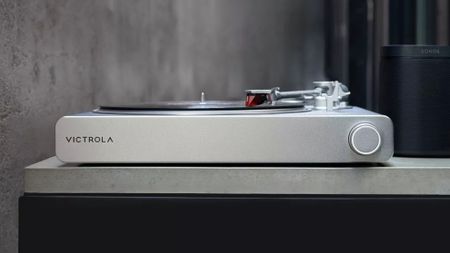 The Sonos-streaming turntable is getting an upgrade to make it more than Sonos
The Sonos-streaming turntable is getting an upgrade to make it more than SonosA free upgrade will give your Victrola turntable streaming superpowers
By Carrie Marshall Published
-
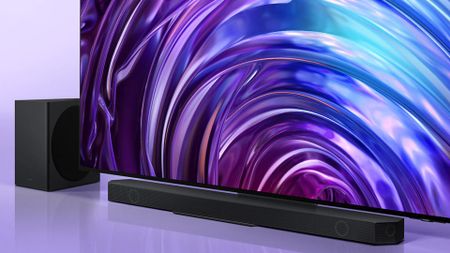 Samsung HW-Q800D review: perfect for almost any TV?
Samsung HW-Q800D review: perfect for almost any TV?This brilliant soundbar is a powerful addition to your setup
By Simon Lucas Published
-
 Sonos planned a crazy new product for iPhone owners, but reportedly scrapped it
Sonos planned a crazy new product for iPhone owners, but reportedly scrapped itSonos had a plan for an iPhone accessory, but it didn't come to pass
By Chris Hall Published
-
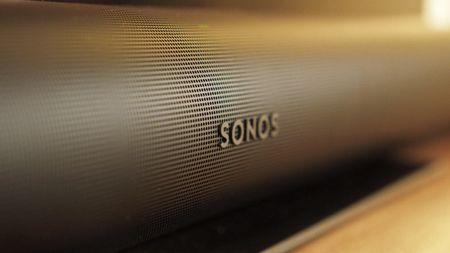 Sonos' streaming box is reportedly beautiful and could replace your Apple TV, except for one thing
Sonos' streaming box is reportedly beautiful and could replace your Apple TV, except for one thingEverything about Sonos's new streaming box sounds great... well, nearly everything
By Carrie Marshall Published
-
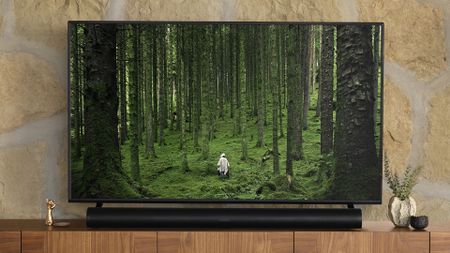 It’s the end of the line for the Sonos Arc
It’s the end of the line for the Sonos ArcSonos's superb soundbar has finally been discontinued – but for good reason
By Carrie Marshall Published
-
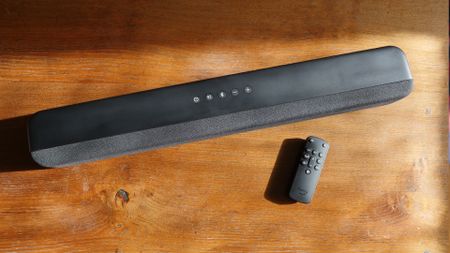 Amazon Fire TV Soundbar review: low-cost soundbar offers a middling upgrade
Amazon Fire TV Soundbar review: low-cost soundbar offers a middling upgradeThis cheap soundbar can't match the best
By Max Freeman-Mills Published
